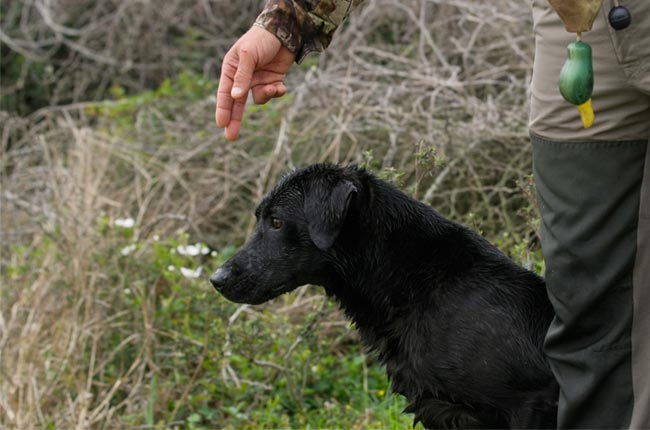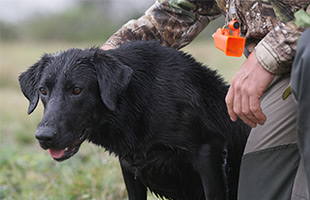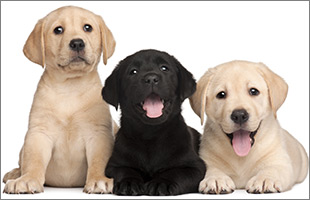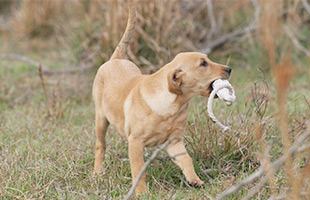The American Labrador can be described in many ways. One can look at the physical attributes of the breed. This would include the shape, size, color and overall appearance of the dog. The AKC currently recognizes three colors of Labradors; Black, Yellow (can range from a fox red to almost white cream color), and Chocolate. Another way to describe the American Labrador is to consider its temperament. This breed has been the number one breed in the United States for decades for a reason. Labradors are very friendly family dogs with an even temperament. They get along well with small children and other animals considerably well. As puppies they can be known to have great amounts of energy but this usually subsides by the age of three allowing them to seem a bit calmer.
These dogs are always up for a game of fetch, hence the name “retriever”. A final way to study the American Lab is in his field work or in hunting situations. There has been a lot of discussion about the differences in American Labs and “English” or “British” labs. One would do well to look at the American and British field trials respectively. In a British field trial, the greatest emphasis is placed on calmness. Several dogs are on the shooting line while an actual shoot takes place. There are dozens of birds shot and each dog must remain calm and quiet while the hunt goes on until he is called upon to perform a retrieve on a particular bird. The dog is expected to complete the retrieve in an orderly manner. He is expected to trail down the wounded bird and needs to be able to take hand directions from his handler when necessary. The emphasis is on being a gentleman’s gun dog.
The American field trial is a different one altogether. In a field trial, dogs are expected to mark or remember multiple birds on land and in water at extreme distance with many distractions on the way. A dog may have to cross a ditch, through a pond, up a hill, through cover, and along a canal for 300 yards or more. He is then expected to return to the handler on a straight line back through these same obstacles to get one or two more birds that were thrown in like manner. The dog is also expected to retrieve unseen birds at hundreds of yards by hand and whistle signals. Again straight lines there and straight lines back are desirable. There will once again be many things along the way to cause the dog to want to stray from the line. The dog who does this the best wins. By looking at the demands each test places on the dogs one can see that the American dog should be able to have a great memory, be able to handle pressure, and should have lots of drive to carry out these tasks.
The hunting situations in the US are also greatly different than most of those in the UK. In the UK, many but not all of the hunts are in controlled environments with “released” birds and a group of dogs and handlers. This calls for a very calm cooperative dog. In the US most hunts are on wild birds in extreme weather conditions. From a 95 degree dove hunt to a 20 degree duck hunt in water, the American Labrador has to be a very driven, well conditioned athlete to get the job done. He must also be able to make long retrieves in bays, marshes, and fields where many times he is the only dog picking up over a dozen ducks, dove, or geese.
At Duck Dog Trainer, we specialize is training Labrador Retrievers. With decades of training experience and hundreds of dogs trained, we know how to bring the champion out of our dog. Call us today at (409) 460-2314!









